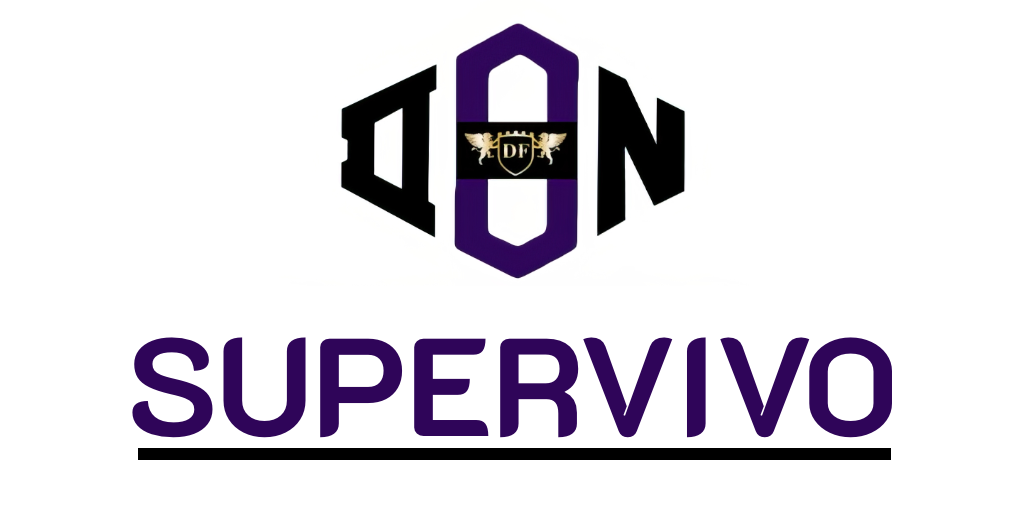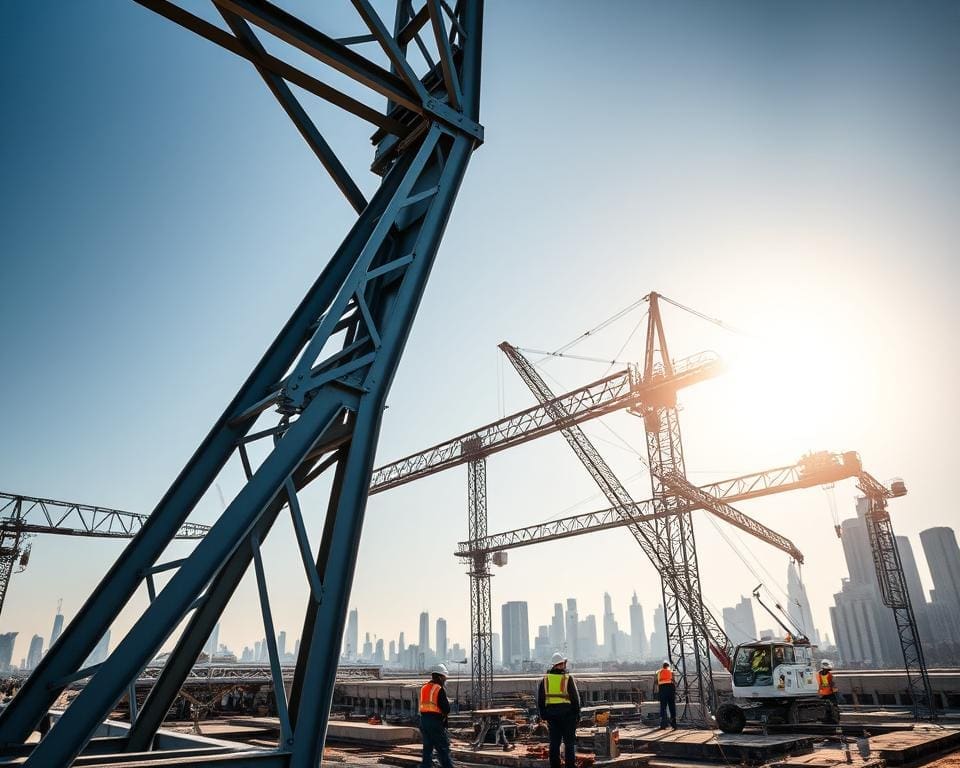The world of steel construction is undergoing a remarkable transformation, driven by cutting-edge innovations that redefine industry standards. These advancements in steel technology not only improve the efficiency of construction projects but also enhance safety and sustainability. Modern steel building techniques are paving the way for more resilient structures, integrating smart technologies that promise a future of intelligent design and construction.
As we explore the latest breakthroughs, we will uncover how steel construction innovations are setting new benchmarks in structural engineering. From advanced materials to the application of sophisticated digital tools, these innovations promise to enhance every aspect of the construction process, making it more sustainable and effective.
Introduction to Steel Construction Innovations
As the call for sustainability and efficiency in building practices grows louder, the field of steel construction rises to the challenge by embracing a wave of innovations. This pivotal introduction to innovations within the industry paves the way for cutting-edge solutions that address contemporary issues, such as climate change and resource scarcity.
By implementing advanced techniques, the steel construction sector not only enhances the quality of projects but also maximises resource efficiency. Architects and engineers are increasingly turning to modern practices that improve project outcomes while reducing environmental impacts.
This transformation reflects a broader trend in construction advancements, where the integration of new methodologies is crucial for future success. Professionals within the industry are adapting to technological advancements, positioning steel construction as a leader in sustainable practices.
Smart Steel Technologies
The evolution of smart technologies in construction is reshaping the landscape of steel structures. Enhanced by the Internet of Things (IoT), these innovations allow for the seamless integration of technology and traditional construction methods. This shift promotes not only safety and efficiency but also a more responsive approach to construction practices.
Integration of IoT in Steel Structures
IoT steel structures are revolutionising how we monitor and maintain infrastructure. By embedding sensors within steel, these structures can collect critical data on stress, strain, and environmental conditions. This information enables predictive maintenance, allowing for early detection of potential issues that may affect structural integrity. The result is a significant reduction in downtime and increased longevity of steel assets.
Digital Twins in Construction Management
The concept of digital twins in construction represents a transformative approach to managing projects. These virtual replicas of physical structures facilitate real-time monitoring and simulation, which can lead to improved decision-making throughout the construction phase. By visualising how a project will evolve, construction teams can identify and rectify potential errors before they become costly problems, enhancing overall project efficiency.
Advanced Steel Materials
The evolution of advanced steel materials plays a crucial role in modern construction, driving efficiency and sustainability in projects worldwide. With the introduction of high-strength alloys, construction professionals are now able to design structures that are lighter yet stronger, optimising material use and enhancing performance.
High-Strength Steel Alloys
High-strength alloys are engineered to withstand extreme load conditions, making them indispensable in today’s demanding construction environments. These materials allow for greater design flexibility by reducing the overall weight of structures without compromising on durability. With a focus on safety and longevity, architects and engineers increasingly rely on these advanced steel materials to create resilient buildings that can endure the test of time.
Corrosion-Resistant Coatings
In addition to high-strength alloys, the development of corrosion-resistant coatings significantly contributes to the lifespan of steel structures. These coatings protect against harsh environmental factors, reducing the need for frequent maintenance and replacements. Investing in corrosion-resistant options not only lowers long-term costs but also enhances the sustainability of construction practices, aligning with global efforts to minimise environmental impact.
What are the latest innovations in steel construction?
The construction industry is witnessing transformative changes driven by the principles of modular construction and prefabrication in steel. These methodologies facilitate the assembly of pre-manufactured components on-site, leading to a substantial reduction in both construction time and material waste. Emphasising efficiency, modular construction not only streamlines processes but also optimises resource utilisation, proving beneficial for both developers and the environment.
Modular Construction and Prefabrication
Modular construction represents a paradigm shift in how steel structures are conceived and built. By creating elements in a factory setting, teams can ensure consistency in quality while adhering to tight deadlines. Prefabrication in steel minimises the unpredictability that often accompanies traditional construction methods. This innovative approach allows for seamless integration of various building systems, resulting in more efficient workflows.
Sustainable Steel Production Practices
Sustainable steel production practices are integral to the modernisation of the industry. Manufacturers are increasingly adopting recycling initiatives that reduce the environmental impact of steel production. Utilising renewable energy sources during manufacturing processes marks a significant advancement, leading to a lower carbon footprint. These sustainable practices not only contribute to the environment but also align with growing consumer demand for responsible building materials, reinforcing the steel industry’s commitment to sustainability.
3D Printing and Steel Fabrication
In recent years, 3D printing in construction has emerged as a revolutionary force, particularly within the realm of steel fabrication. This technology enables the creation of intricate designs that were once deemed impossible or impractical. As the demand for innovative construction solutions increases, the adoption of additive manufacturing becomes paramount.
Benefits of Additive Manufacturing
Additive manufacturing offers numerous advantages that significantly enhance the construction process. Notably, this method reduces material waste, contributing to sustainable building practices. The capability to produce complex geometries allows architects and engineers to explore creative designs without the constraints typically associated with traditional methods. Key benefits include:
- Enhanced creativity: Designers can experiment with unique structures that challenge traditional architecture.
- Cost-effective solutions: Lower material costs and faster production times lead to significant savings.
- Streamlined workflows: Faster prototyping and production minimise delays in construction schedules.
Case Studies of 3D Printed Steel Structures
Several groundbreaking projects showcase the practical application of 3D printing in construction. These case studies illustrate how additive manufacturing can transform the landscape of steel fabrication. For instance, a notable project in the United Kingdom involved the construction of a pedestrian bridge entirely through 3D printing techniques. This innovative approach not only reduced construction time but also ensured high structural integrity.
Another example involves the fabrication of customised steel components for a high-rise building, where traditional methods would have been time-consuming and expensive. The use of 3D printing facilitated precise designs and rapid assembly, demonstrating the potential of this technology to redefine construction methodologies.
Robotics in Steel Construction
The integration of robotics in construction marks a significant advancement in the field of automation in steel building. Modern construction technology empowers robots to perform complex tasks, enhancing precision and efficiency on sites. Robotics can handle multiple roles, including welding, assembly, and material handling, ensuring that processes are executed with minimal human error.
This evolution in construction has paved the way for safer work environments. By delegating hazardous tasks to machines, the risk to human workers is significantly reduced. Employing robotics not only optimises project timelines but also fosters innovation within teams, as they can focus on more creative problem-solving activities instead of routine tasks.
As robotics in construction continues to develop, we can expect a redefined landscape for workforce dynamics in the steel industry. The synergy between humans and machines will lead to enhanced capabilities, streamlining processes, and building a more efficient future in construction.
Building Information Modelling (BIM)
Building Information Modelling (BIM) serves as a transformative force in the realm of steel construction. Utilising BIM in construction enhances collaboration among architects, engineers, and builders. The visualisation capabilities enable stakeholders to grasp complex designs through a 3D lens, paving the way for greater project efficiency. Real-time updates ensure that all participants remain aligned, ultimately contributing to successful outcomes.
Benefits of BIM for Steel Projects
The benefits of Building Information Modelling are numerous and significant. Enhanced visualisation and collaboration lead to improved communication and fewer misunderstandings. With BIM, teams can:
- Visualise project components in a detailed three-dimensional space.
- Conduct simulations to anticipate challenges before they arise.
- Improve accuracy in quantity take-offs, which aids in budgeting and resource allocation.
These factors collectively enhance efficiency and productivity throughout the project’s lifecycle, making BIM invaluable for steel projects.
Implementation Challenges and Solutions
The challenges of BIM can present hurdles for construction professionals. Issues such as varying levels of software proficiency, resistance to change, and integration with existing processes may arise. To mitigate these challenges:
- Invest in comprehensive training programs focused on BIM software capabilities.
- Engage stakeholders early to foster a culture of collaboration and adaptability.
- Implement phased integration of BIM tools to ensure a smoother transition.
By addressing these challenges, the full spectrum of benefits from Building Information Modelling can be harnessed, leading to successful outcomes in steel construction.
Innovative Construction Techniques
As construction demands evolve, the adoption of innovative construction techniques becomes paramount for enhancing structural performance and sustainability. Among these techniques are cross-laminated steel and design strategies aimed at improving seismic resistance, vital for ensuring safety in areas vulnerable to earthquakes.
Cross-Laminated Steel Technology
Cross-laminated steel represents a breakthrough in material science, combining durability and sustainability. This innovative construction technique utilises renewable materials, significantly reducing the carbon footprint of building projects. Structures made from cross-laminated steel exhibit enhanced stability, allowing them to withstand both vertical and lateral loads effectively.
Seismic-Resistant Steel Structures
The growing emphasis on seismic resistance in construction cannot be overlooked. Implementing advanced design features is essential for structures situated in earthquake-prone regions. Innovative construction techniques focused on seismic resilience include the integration of damping systems and flexible connections, ensuring that buildings can absorb and dissipate seismic energy. These enhancements contribute to building confidence in safety measures for occupants and communities alike.
Future Trends in Steel Construction
The future trends in steel construction are poised to reshape the industry landscape as emerging technologies and sustainability efforts converge. As we look ahead, the integration of smart materials and augmented reality in project management is anticipated to enhance efficiency and accuracy throughout the construction process. These upcoming innovations are expected to revolutionise the way teams collaborate and execute projects, ultimately elevating the standards of steel construction.
Furthermore, the steel industry outlook is increasingly focused on environmentally friendly production methods. Innovations aimed at reducing the carbon footprint of steel fabrication are gaining traction, with ongoing developments in recycling technologies and improved energy efficiency practices. This shift towards sustainable practices not only addresses growing environmental concerns but also aligns with the expectations of consumers seeking eco-aware solutions.
As regulatory changes continue to unfold, steel construction professionals must remain agile and informed. The evolving market demands will drive trends that prioritise adaptability and resilience within steel structures. Embracing these future trends in steel construction will be crucial for stakeholders who aspire to lead the industry with innovative and sustainable practices, ensuring a robust pathway for growth and advancement.









